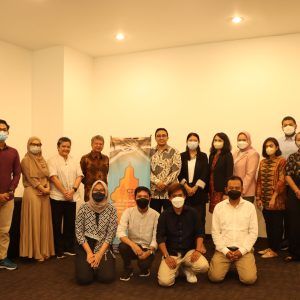Jakarta, October 25, 2021 – A comprehensive renewable energy potential map needs to be prepared to support the energy transition towards utilizing 100 percent renewable energy and achieving zero emissions in Indonesia by 2050.
Indonesia’s renewable energy technical potential data still refers to the General National Energy Plan (RUEN) of 443.2 GW. This data has not been updated since 2014. Moreover, the RUEN data is also much lower than the actual potential of renewable energy.
“The suboptimal data on the potential for renewable energy will affect the perspective, strategy, and decision making on the use of renewable energy in Indonesia. This data confusion will make the government and business actors unable to plan optimally the energy transition in Indonesia, and formulate policies to accelerate the use of renewable energy. Updating data is significantly strategic for the executives to plan Indonesia’s energy transition,” explained Fabby Tumiwa, Director of the Institute for Essential Services Reform (IESR).
IESR uses GIS to update solar, wind, and water technical potential data. Considering the variability and intermittent issues of these three types of renewable energy, IESR also examines the potential of biomass and pumped hydro energy storage (PHES) for complementing it. As a result, Indonesia has a total technical potential of solar, wind, hydro, and biomass energy of 7,879.43 GW and 7,308.8 GWh for PHES.
“Biomass and PHES can be used as complementary sources to overcome the intermittent and variability issues of solar, wind, and water energy. Our calculation results show that the biomass potential reaches 30.73 GW. However, its efficiency is only 20-35%, so it requires PHES,” said Handriyanti Diah Puspitarini, Senior Researcher and Lead Author of the Study “Beyond 443 GW Indonesia’s infinite renewable energy potentials”.
This magnificent potential if utilized optimally will be able to meet all energy needs in Indonesia. The study of Decarbonization of Energy Systems in Indonesia, conducted by IESR and published last May, projected that energy capacity needs will reach 1600 GW by 2050. By utilizing 100% renewable energy, Indonesia can meet the electricity demand of 1600 GW and achieve zero emissions by 2050. Based on the study, its main contribution comes from 1,492 GW of solar PV (88% of the primary energy mix), 40 GW of hydropower, and 19 GW of geothermal and supported by optimal storage capacity.
The study “Beyond 443 GW Indonesia’s infinite renewable energy potential” also contains detailed data on the technical potential of solar, wind, water, biomass, and PHES in 34 provinces in Indonesia. This data can be adopted by the central and provincial governments to more aggressively promote and develop renewable energy projects that are decentralized according to their most prominent potential. Yet, it is still interconnected between islands and provinces to balance their energy supply.
“This renewable energy potential map can be further developed by considering the development to operational costs so that it can provide a more precise outline to stakeholders about the optimal location of renewable energy to be developed. Furthermore, the development of renewable energy can be realized with the support of the right policies and regulations,” added Handriyanti.
Through this study, IESR recommends that the government, first, improve data on renewable energy potential as the reference for planning in the energy and development sector, and conduct regular reviews as renewable energy technology matures. Second, the government and experts need to complete the technical potential map with a brief analysis of the network’s intermittent, variability, and grid readiness, including predictions of climate conditions in the next few years. Third, the government and stakeholders should start considering the development of the decentralized system and inter-island connections as a way to provide electricity from renewable energy that is accessible to communities throughout the island, especially remote areas. Fourth, the government needs to give more support to various renewable energy technology innovations so that they can open up opportunities for utilizing the huge potential of renewable energy.
Table : Technical Potential of Renewable Energy in Indonesia
Type | Technical potential |
|
|---|---|---|
Scenario 1 | Scenario 2 |
|
| Solar photovoltaic (rooftop, ground mounted, and floating) | 7,714.6 GW | 6,749.3 GW |
| Micro- to small-hydropower, with capacity ≤ 10 MW | 28.1 GW | 6.3 GW |
| Onshore wind power | 106 GW at 50 m hub height and 88 GW at 100 m hub height | 25 GW at 50 m hub height and 19.8 GW at 100 m hub height |
| Biomass power (only from crop wastes and wooden biomass) | 30.73 GW |
|
| Pumped Hydro Energy Storage | 7,308.8 GWh |
|
The study “Beyond 443 GW Indonesia’s infinite renewable energy potential” can be downloaded at the link s.id/Beyond443GW
The video of launch of the study “Beyond 443 GW Indonesia’s infinite renewable energy potential” can be watched on Youtube IESR Indonesia at https://youtu.be/eS_PQD3gEIs



